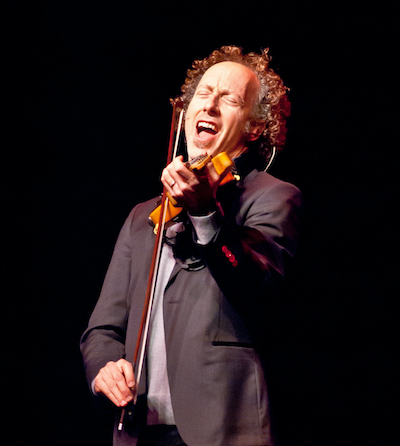Adams concerto a highlight in Bancroft’s breathless Baltimore Symphony debut

Ryan Bancroft conducted the Baltimore Symphony Orchestra Thursday night at the Music Center at Strathmore.
After an absence of 22 months, the Baltimore Symphony Orchestra returned Thursday night to the stage of the Music Center at Strathmore, what BSO chief operating officer Tonya McBride Robles called “our second home.” The fully vaccinated and masked audience was small and socially distanced. Amid a flurry of cancellations this month caused by the surge of the Omicron variant in the area, it was a rare and welcome chance to hear live music.
At the podium for his BSO debut was Ryan Bancroft, a California-born conductor who has risen quickly to prominence after winning the Malko Competition in 2018. He currently serves as principal conductor of the BBC National Orchestra of Wales, and last month the Royal Stockholm Philharmonic Orchestra named him their chief conductor, an appointment beginning in 2023.
Bancroft opened with György Ligeti’s Concert Românesc, a tribute to the folk music of his youth as a Hungarian speaker in Transylvania. Composed in 1951, before Ligeti escaped the artistic restrictions of Communist Hungary, it is less focused on modernist techniques than his later music and in part based on Romanian folk music. Ligeti described the piece with its woodwind-heavy orchestration as “in the spirit of the village bands.”
In the first section, the strings crooned a warm unison melody, taken up later by the flute. Bancroft, who demonstrated boundless energy all evening, pushed the tempo of the second movement to a helter-skelter mania. The dreamy third movement stood out for the natural tuning in the French horn solos, with Ligeti avoiding the use of the valves. As an offstage player echoed each statement like Alpine horns calling to one another, Melissa Hooper’s limpid English horn solos added to the rustic flavor.
Bancroft’s breathless pacing sparked a mad rush in the finale, a morass of buzzing, muted runs from which concertmaster Jonathan Carney exploded with folk fiddle fervor, answered by clarinet and viola solos. A brief return to the mountain horns provided a much-needed breather before an exultant conclusion.
The Ligeti piece, with its full complement of woodwinds, was an ingenious pairing for the second work, The Dharma at Big Sur, which John Adams composed with a generous assortment of brass and winds that include two bass clarinets. Visa delays prevented British violinist Chloë Hanslip from taking the solo part, but Tracy Silverman, who gave the premiere of the work at the opening of Walt Disney Concert Hall in Los Angeles in 2003, stepped in to save the day.

Tracy Silverman was the electric violin soloist in John Adam’s The Dharma at Big Sur Thursday night.
Wave-like patterns in two keyboard samplers set the tone in the opening bars, setting up the “slow, lazy rhythm of terrifying power” of the Pacific Ocean striking the cliffs at Big Sur. Brass partials echoed the just intonation called for in harps and keyboard, a sort of musical tribute to nature (also reminiscent of the earlier Ligeti piece). Gongs and other exotic percussion recalled the “American gamelan” of composer Lou Harrison, dedicatee of the first movement.
Adams conceived the piece after hearing Silverman play the electric violin at a jazz club in 2002, and his more vernacular style of bends and slides and blue notes strongly influenced the shape of the work. By comparison to Leila Josefowicz, who has performed the piece with the BSO and with the National Symphony Orchestra with Adams at the podium, Silverman’s style was more laid back than thrilling, with some technical lapses in the top range of his six-stringed instrument.
That said, Silverman and Bancroft collaborated with rhythmic ease on a reading that communicated dharma, the Buddhist concept of universal truth, with consummate California cool. The second movement rippled with a near-constant pulsing motif evocative of the music of Terry Riley, who was its inspiration, with Bancroft demarcating the multitudes of metric shifts with crisp efficiency. The large brass section surged and swelled with oceanic power in the vast crescendos of the conclusion
As an encore, Silverman offered his own arrangement of Stevie Wonder’s song “I Wish,” serving as a joyful, nostalgic celebration of live music. Accompanying himself with loops recorded on the spot, Silverman wove together the sound of an entire rock band, from string bass riffs to electric guitar solo wails.
Bancroft’s insistent preference for zestful tempi proved erratic in the second half, devoted to Beethoven’s Seventh Symphony. All four movements of this “apotheosis of the dance” tended toward Bacchic fury rather than graceful ballet, and tempos fluctuated occasionally even within movements. With many extreme gestures, Bancroft signaled a desire for excitement and he got it, with the BSO musicians turning on a dime with impressive accuracy, even as the conductor jumped nearly attacca between the movements.
The first and second movements hurried by, with little notice given to details except occasionally some oddly long pauses. By the time of the third movement, there was almost no room to impress with further speed, although the BSO continued to deliver with well-oiled precision. Bancroft reveled in fullness of sound, calling for booming timpani and growling double basses. By the time the fourth movement accelerated to a topsy-turvy conclusion, this listener was as exhausted as the conductor.
The program will be repeated 8 p.m. Friday and Saturday at Meyerhoff Symphony Hall. bsomusic.org; 410-783-8000
